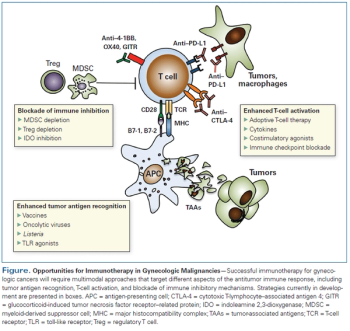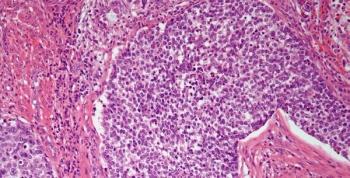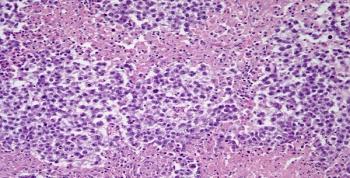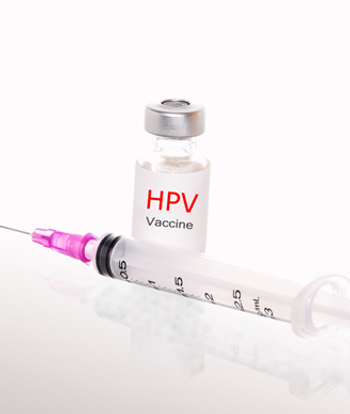
The movement of ovarian carcinoma histotypes from ill-defined and poorly reproducible clusters of cases to distinct disease entities clearly has beneficial implications for patient management.

Your AI-Trained Oncology Knowledge Connection!


The movement of ovarian carcinoma histotypes from ill-defined and poorly reproducible clusters of cases to distinct disease entities clearly has beneficial implications for patient management.

In this review, we will summarize clinical trials that have used various immunotherapeutic strategies, with a particular focus on recently emerging data for new agents and combinations.

Adolescent girls who live in predominantly Hispanic and high poverty communities are more likely to have had at least one HPV vaccine dose compared to girls in low poverty communities and those with different ethnic make up.

The advent of immunotherapy presents us with new treatment approaches in gynecologic cancers, with preliminarily promising outcomes. Multiple clinical trials are currently being conducted to better define the role of immunotherapy. Further investigation is warranted to develop and identify predictive biomarkers.

A mouse study found that resveratrol has a significant antitumor effect in an ovarian cancer model, and also suppressed tumor regrowth following cisplatin.

Women older than 70 received less treatment for ovarian cancer than did their younger counterparts, according to the results of a single-center French study.

Women with chemotherapy-naive advanced ovarian cancer gained significant delays in the progression of their disease when adding nintedanib to carboplatin/paclitaxel.

A 47-year-old woman undergoes a hysterectomy and a section of the endometrium is sent for analysis. What is your diagnosis?

The panel reviewed the pertinent literature in vulvar cancer and voted on three variants to establish appropriate use of imaging, adjuvant radiation, including dose, fields, and technique, as well as adjuvant chemotherapy. This report will aid clinicians in selecting appropriate patients for adjuvant treatment and will provide guidelines for the optimal delivery of adjuvant radiation therapy and chemotherapy.

In this interview we discuss sexual health during cancer treatment and some of the disappointments of precision medicine.

A review by the European Medicines Agency shows that the HPV vaccine does not cause complex regional pain syndrome and postural orthostatic tachycardia syndrome.

A study in Great Britain found that women diagnosed with female factor infertility were at an increased risk for ovarian cancer.

Muscle attenuation assessed with preoperative CT was an independent prognostic marker in patients with epithelial ovarian cancer.

A 24-year-old young woman presents with pelvic pain and a mass in the left side. After further evaluation, a biopsy is performed. What is your diagnosis?

A 42-year-old woman presents with uterine bleeding. After further evaluation, a biopsy is performed. What is your diagnosis?

A new study at a single center in Japan found no significant differences in the rate of BRCA mutations between ovarian cancer patients with or without family histories of the mutations and recommends that BRCA1/2 testing be required for all ovarian cancer patients

A recent study that gave hormone therapy to ovarian cancer patients with severe menopausal symptoms revealed that the treatment had a beneficial survival effect.

In this interview we discuss the latest on HPV vaccines for cancer prevention and some of the struggles countries face in achieving widespread adoption.

An investigational vaccine has shown activity as a therapeutic treatment for high-grade pre-cancerous cervical lesions caused by the human papillomavirus.

Here we discuss the advantages and pitfalls of HIPEC in advanced ovarian cancer, as well as current data and ongoing prospective trials.

The evidence suggests that few centers offer IP therapy routinely. Why? The answer may be that oncologists simply don’t know what to do. There have been three completely distinct regimens, none of which has been used in the outpatient setting.

Based on the currently available scientific evidence, HIPEC should not be considered a standard therapeutic option after optimal cytoreduction in advanced ovarian cancer, nor should it be offered outside of a clinical trial.

A small study showed that treatment with the anti-PD-1 immunotherapy nivolumab was able to produce complete responses in patients with advanced platinum-resistant ovarian cancer.

Beta-blockers were associated with increased overall survival in women with epithelial ovarian cancer, according to a retrospective study.

Government-subsidized breast cancer and cervical cancer screening will no longer be available through Planned Parenthood clinics in Texas beginning September 1, 2015.